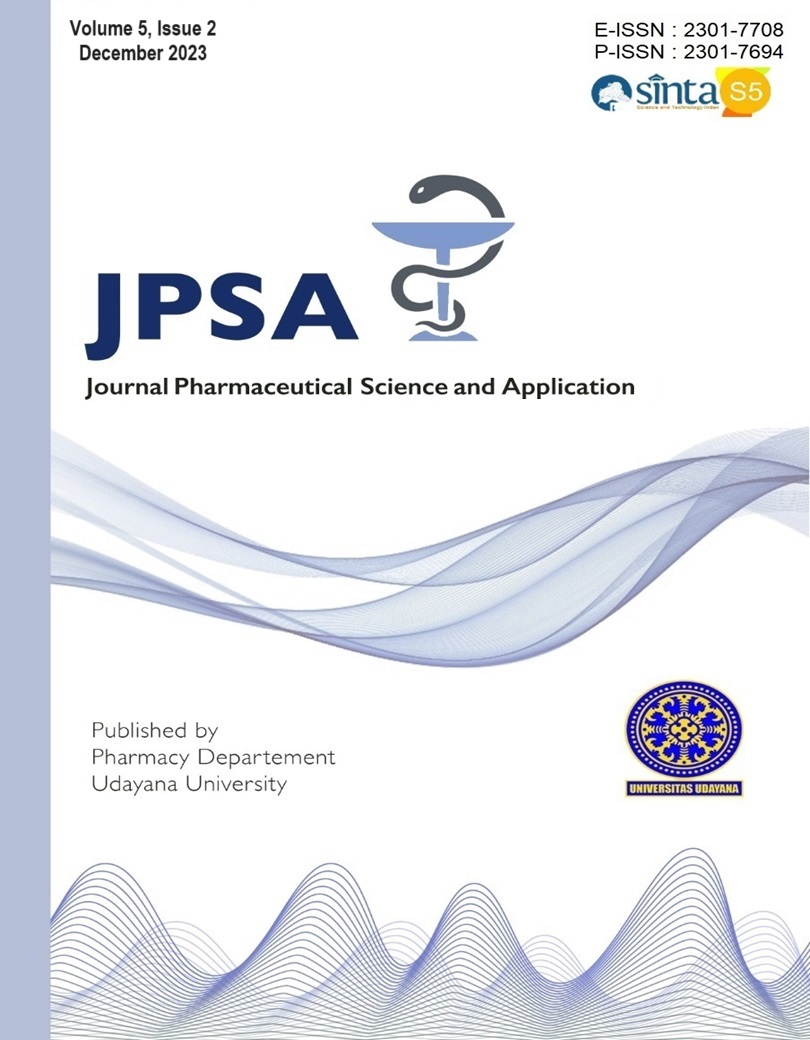OPTIMIZATION OF GUMITIR FLOWER EXTRACT (TAGETES ERECTA L.) SUNSCREEN CREAM : SIMPLEX LATTICE DESIGN METHOD
Abstract
Background: Sunscreen cream is used to protect the skin from the bad effects of sunlight. Making a good sunscreen cream requires paying attention to the composition of the constituent compounds to obtain a standardized cream formquality. Formula optimization is carried out in each cream formulation, including to produce of Gumitir flower extract sunscreen cream. Objective: The aim of this research is to produce an optimum formula for Gumitir flower extract sunscreen cream. Methods: The method used in this research is the Simplex Lattice Design optimization method to find the optimum base between stearate acid cream base and triethanolamine. Results: Optimization results show that variations in stearic acid and triethanolamine cream bases influence the physical properties of viscosity and adhesiveness of sunscreen cream preparations, with stearic acid as the dominant factor influencing viscosity. Conclusion: The conclusion obtained from this research is that the optimum formula for Gumitir flower extract sunscreen cream was obtained with a base composition of 13.5% stearic acid and 2.5% triethanolamine.
Keywords: Optimization; Gumitir; Extract; Sunscreen
Downloads

This work is licensed under a Creative Commons Attribution 4.0 International License.
Authors who publish with this journal agree to the following terms:
Authors retain copyright and grant the journal right of first publication with the work simultaneously licensed under a Creative Commons Attribution License that allows others to share the work with an acknowledgment of the work's authorship and initial publication in this journal.
Authors are able to enter into separate, additional contractual arrangements for the non-exclusive distribution of the journal's published version of the work (e.g., post it to an institutional repository or publish it in a book), with an acknowledgment of its initial publication in this journal.
Authors are permitted and encouraged to post their work online (e.g., in institutional repositories or on their website) prior to and during the submission process, as it can lead to productive exchanges, as well as earlier and greater citation of published work. (See The Effect of Open Access).

This work is licensed under a Creative Commons Attribution 4.0 International License.


 HOME
HOME
















